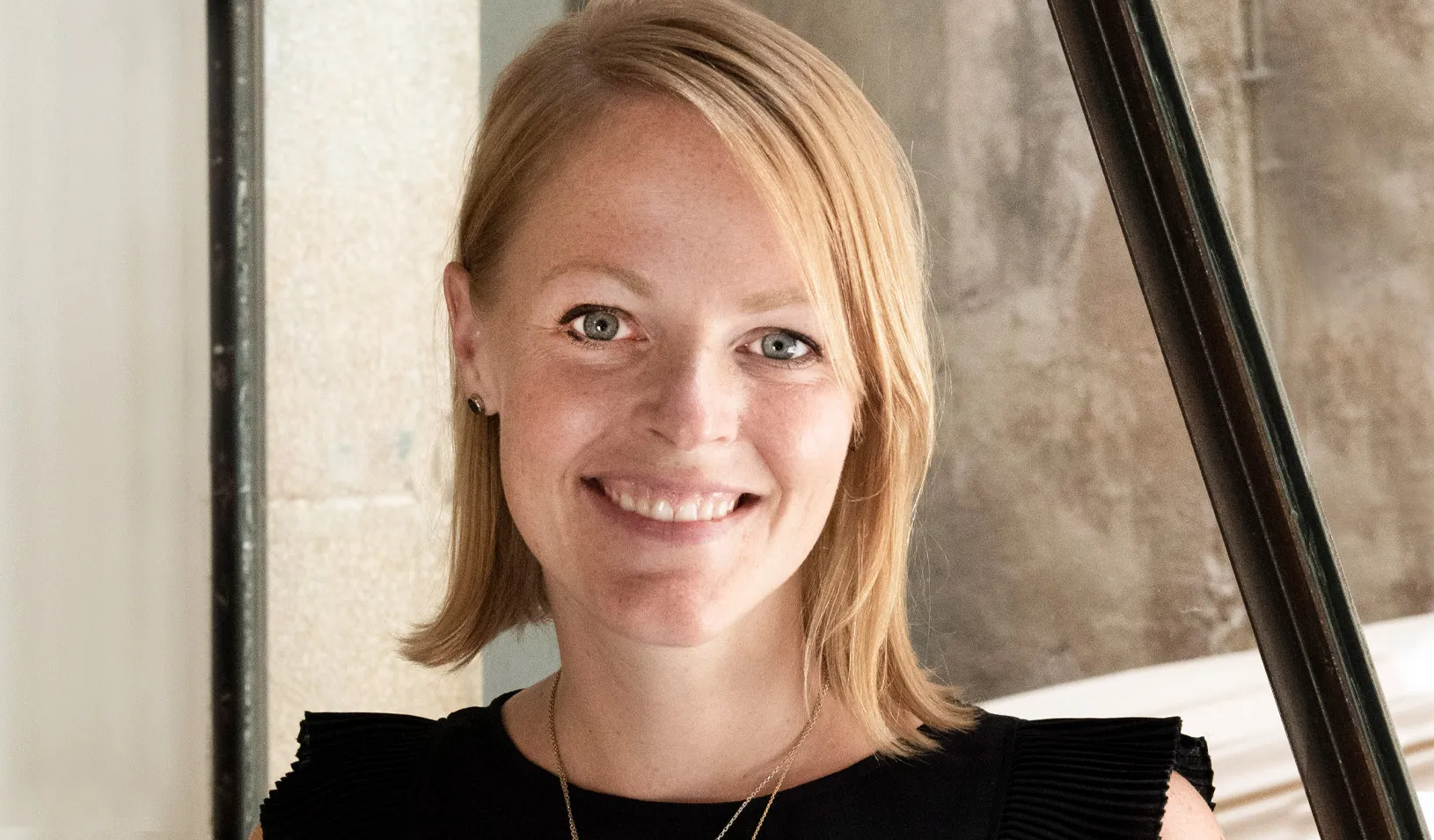Graduation Speech by Herb Allison, MBA '71
Stanford Graduate School of Business Diploma Ceremony
June 11, 2011
The following is a pre-written transcript of the commencement address given by Herb Allison In the 40 years since Allison graduated from the GSB with an MBA in 1971, he has led a multifaceted career in the world of finance, in both the private and public sectors. In his 28 years at Merrill Lynch he rose to president, then headed TIAA-CREF, later served as National Finance Chair for Senator John McCain’s campaign for President in 2000, and most recently headed the nation’s Troubled Asset Recovery Program (TARP) in 2009.
Thanks, Garth, for your kind introduction.
I’m honored to have the privilege of addressing you, this year’s graduates of the world’s finest business school.
Congratulations on completing the journey that brought you to this ceremony.
When I was asked to speak at today’s ceremony, I wondered what I could say that would resonate with you — 450 unique individuals with differing backgrounds, values, interests, and aspirations.
So, I met with some of your classmates in April to ask what was on their minds and perhaps yours.
One told me he was excited, but also apprehensive.
Another said she feared losing her way toward having the kind of impact on the world she wants to have.
Another asked about leadership styles — and whether it’s best to “be yourself” or to adopt a certain style that may have more impact.
And, finally, one person asked what mattered to me when I graduated.
Well, it’s been quite a while since I was sitting in your seats — in fact, I’ll soon attend my 40th reunion. But I still vividly remember having the same kinds of ambivalent feelings, doubts, and hopes when I graduated.
Today, I want to share with you a few short stories about my winding path over these past four decades, stories that are meant to underscore some advice that I hope will help you along your own journey ahead.
Let’s get to the advice right away. It’s pretty simple.
There is one thing that you should take with you when you leave this campus and, from now on, never be without - and that’s your own personal compass.
By that I mean a set of commitments to yourself that are grounded on your innermost thoughts about what’s important to you, what you want out of life, and how you’ll have to conduct yourself to uphold your self-respect.
I can assure you that if you live by your own compass - continuously using it to guide the choices you make in the days and years ahead - you’ll be fine.
You won’t fall into the trap of following the path that’s obvious, conventional, and overcrowded; or the path of least resistance; or the path that others expect you to take; or the path that you think looks most impressive to all your friends.
Instead, you will chart your own course, based on your deepest values and preferences.
When I was in your place, I had already created a personal compass: two commitments to myself.
One was to take the most challenging opportunities open to me, those that would test me the most, and accelerate my growth.
I had just spent four years in the Navy and two in the GSB, and I felt that many of my peers had moved ahead of me in building their lives and careers. I was in a hurry to catch up.
During my interviews for a job after graduation, Morgan Stanley told me I’d have to carry some investment banker’s briefcase for five years before running my own deals.
Merrill Lynch said they were short of talent and I’d be running deals within a year. So I chose Merrill, even though it then lacked Morgan’s cachet and market share.
That was the beginning of a fabulous, 28-year odyssey. But it almost ended before it got started.
That’s because my second commitment to myself was to speak honestly and openly, even if it put me at odds with those around me.
When I became disenchanted with Merrill’s banking division in my first months there - because it was bureaucratic and I wasn’t permitted to use the advanced financial models I’d learned at Stanford - I brashly attempted what’s now called “transformational leadership,” but from my perch at the very bottom of the organizational pyramid.
I wrote a memo to the head of investment banking, blasting the division’s structure and management and proposing sweeping changes.
Needless to say, he didn’t appreciate my insights. Soon after, I was transferred out of the country.
They sent me to Merrill’s tiny outpost in Paris. Before leaving, I asked an old timer, “What’s it like to work for Merrill overseas?” He said, “We don’t know. No one’s ever come back alive.”
Although my bosses and peers thought I was ticketed for oblivion, I chose to see the opportunity in my situation - a chance to be a pioneer in Merrill’s expansion across Europe.
I thrived in Paris and, after 18 months, another offbeat opportunity appeared when the Shah of Iran asked Merrill to send an expert on capital markets to help develop the Tehran Stock Exchange.
Now, if Paris was considered a backwater, you can only imagine how Tehran was viewed. But I begged for the assignment because it fascinated me. I knew it would be challenging, and I’d gain some visibility as Merrill’s only representative in the Middle East. When no veteran banker would take it, Merrill and the Iranians reluctantly settled for a 30-year-old with just 2½ years experience.
I spent four years in Iran building a start-up joint venture that became Merrill’s first investment in a domestic, diversified securities business outside the U.S.
My Merrill friends had completely written me off by then, but following one’s compass along unbeaten paths often leads to unexpected benefits.
By far the most important one for me, and the most unexpected, was meeting my future wife on my first day of work in Tehran.
Soon, I also discovered that Merrill’s chairman at the time, Don Regan, had adopted the Iran venture as his pet project. He and other top executives began visiting Tehran regularly, and I got to know them well.
A few years later, I was reassigned to Merrill’s headquarters as assistant to the chairman and president, working on the company’s strategic plan. So, my career was still alive. But then it became even more important to chart my own course and follow my personal compass.
I wanted to gain broad-based experience across the company — the kind that would prepare me, perhaps, to lead Merrill one day. So I took jobs in areas ranging from marketing to human resources to finance, because I wanted the challenges and the skills they offered.
Looking back, I see that my migration across the company not only broadened my experience but also compelled me to learn the essence of what’s now called “transformational leadership” — the kind of leadership that brings about real change in an organization.
What I learned is that transformational leadership is not about the skills and authority you as leader bring to the table. It’s about tapping the innate aspirations of the people you lead - the same aspirations we all have - to make a difference, to grow, to have a voice, and to be recognized.
And transformational leadership is also about becoming one with those people.
I began almost all of my jobs as a total stranger to the people I would lead. Typically, they knew their business much better than I did and were rightly skeptical of my qualifications to chart a new direction for their organization.
I learned that if I tried to overcome their doubts by using rational arguments or imposing my authority, they might acquiesce for the moment, but eventually they’d undermine change, actively or passively, when the going got tough.
So, I took a different approach. I asked the employees to take the lead. I put them in charge of finding the truth about our situation, grappling with the facts among themselves and proposing the goals, strategies, and cultural norms we’d need to succeed.
It was certainly a gamble. But I was confident that if they found the facts and debated the issues together, they would come up with a plan at least as good as any that I would devise. And because they created it themselves, they’d own it and execute it enthusiastically.
That approach has worked well throughout my entire career. In every situation, I’ve found that, once people recognized I was relying on their proposals, they produced plans far more ambitious than I would have dared to impose — and their commitment to plans of their making achieved far more than I originally thought possible.
That doesn’t mean that the transformational leader is a bystander as others run the organization - far from it. You must be highly visible, decisive, and unbending in cultivating the ultimate determinant of your organization’s success: the environment in which people operate every day.
You have to insist on the highest standards of ethical conduct, and never give a second chance to those who bend the truth or abuse others. You have to liberate people at all levels to tell the truth openly about the organization’s situation. You have to assure that those you choose to supervise others have the character to lead. You have to ask the tough questions that cause people to think more deeply about their decisions. And you have to urge people to work with you to define a mission for the company that gives everyone a fulfilling sense of purpose.
Let me give you a personal example of this form of leadership.
I returned to investment banking in the early ’90s as division director after leaving it 20 years earlier as a junior associate. The senior bankers were dubious, to say the least, about my qualifications to lead them.
Back then, Merrill ranked in the second tier of investment banks. The division was fragmented into product and regional fiefdoms that often competed with each other for business.
So I asked the bankers to examine our market position, structure, culture, and incentives.
After debating among themselves, they agreed that we should reorganize into groups focused on clients with similar needs. Instead of paying bankers for generating revenue, we would pay them for developing close advisory relationships with clients and for getting high marks individually for integrity, teamwork, and reliability.
Our new model departed radically from the norms on Wall Street, and it proved astonishingly effective. In just four years, Merrill became the first firm to lead the debt, equity, and M&A league tables simultaneously in the U.S. and worldwide. And by paying for relationships instead of revenues, we earned profits that shattered previous records.
My personal journey has been exciting, rewarding, and less risky than it often appeared, because so many people worked beside me, carried me along, and delivered the results associated with me.
I wish I could take some credit for this approach to transformational leadership, but Lao Tzu defined it 2,500 years ago. In his words, which I’ve updated slightly, “A leader is best when people barely know she exists. When her work is done, her aim fulfilled, they will say: we did it ourselves.”
Essentially, transformational leadership is creating an environment for collaborative learning - by everyone in the organization.
You already have first-hand knowledge of how effective that environment can be, because you’ve been immersed in it here, at the GSB. Your professors — and mine for that matter — didn’t provide the answers. Instead, they invited us to grapple with information, identify key issues, and reach our own conclusions. And because we actively participated in our own learning, we took ownership of it — and we won’t forget it.
I hope you will take that same approach to the organizations you are entering.
Today, you stand at an important and joyous threshold in your lives.
It’s normal to be both excited and a bit apprehensive about whether you’ll live up to your expectations for yourself. Please embrace that insecurity; don’t try to suppress it. It’s rocket fuel for your life. It’s powered you to this point, so let it power you forward.
The question for you now isn’t whether you have the abilities and drive to succeed. You already proved that by joining the select few who have earned GSB degrees.
What matters most is not what particular goals you have for your career, like building the next great tech company or leading a not-for-profit that’s improving lives in your home country, because those outcomes aren’t totally within your control.
What does matter most is how you choose to live your life, what code of conduct will be your personal compass.
As John Gardner, the great humanitarian and former GSB professor, once wrote: “Nature is fascinated by talent, but it pays off on character.”
Countless times in your career you’ll face difficult decisions. Almost always, the toughest decisions will be those that test your values. You’ll often have little or no time to deliberate, and what you decide may well determine your future, your reputation, and your self-respect.
If you don’t have a clear idea of who you are and the kind of person you want to be - if you don’t have a sturdy compass that you follow without deviating - you’ll be rudderless in a swirling ocean. You’ll lose your right to lead, and you won’t have the impact you desire.
What I fervently hope for each of you is that your actions across your life will comport with your values, so that when you return to Stanford for your 40th reunion, in 2051, you’ll be able to look back with satisfaction, knowing that you were true to yourself.
Thank you, and good luck!
For media inquiries, visit the Newsroom.
Explore More
Erin Nixon Joins Stanford GSB as Assistant Dean of Admissions

Nia Rose Froome, MBA ’23: Making Local, Fresh Food Available for All

New Research Fund Promotes Responsible Leadership for the Next Century
